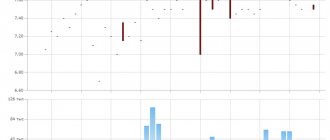Today, many types of securities are known. A security is a document that regulates the rights of its owner to own certain rights to movable and immovable property. There is a whole variety of securities that differ in established criteria and details, in various forms and purposes. One of the pressing questions is how a bill of exchange differs from a bond. Before comparing these two securities, it is necessary to understand the nature of each.
What is a bill of exchange?
A bill of exchange is a document of a debt obligation under which the drawer undertakes to pay the holder of the bill a predetermined amount (face value) within a certain period of time.
Features of this security:
- the bill is issued only in paper form on a secure form;
- it is permissible to transfer a bill of exchange to a third party using an endorsement on the document;
- The subject of payments is only cash (not property or anything else).
The following types of bills are distinguished:
- percentage;
- discount;
- simple;
- translated.
An interest -bearing bill is a security whose income is paid in the form of interest accrued on the nominal value specified in the document.
A discount bill is a security whose income is the difference between the nominal selling price and the discounted purchase price.
A promissory note is a document by which the debtor agrees to pay a certain amount, at the request of the creditor or upon expiration of the contract.
A bill of exchange is a document according to which the payer of monetary compensation to the bill holder is a third party (the debtor of the bill maker).
Where can I buy?
The drawer of the bill can be a bank or legal entity, and the holder of the bill can be an individual or legal entity, as well as individual entrepreneurs.
It is most convenient to purchase a security at a representative office of a bank , for example, Sberbank. This bank has the widest network of branches, offers a variety of ways to use bills and attracts high interest rates on debt obligations. In addition, Sberbank securities are highly valued on the market.
Sberbank bills always indicate the term of the transaction, and the amount of interest or income due to the holder. The minimum term of the bill program is 2 weeks. Upon expiration of the contract, payment can be requested within 3 years.
A legal entity can purchase a security only by bank transfer; for individuals, payment in cash is possible. At the time of signing the agreement, it is impossible to accurately calculate the amount of income, since the maturity date of the bill has not been determined. The rule is this: the higher the investment amount, and the longer the period of storage of the paper, the higher the interest will be.
How to use a bill:
- as an investment;
- as collateral for lending;
- as a cash equivalent when paying for goods and services;
- as a bank guarantee for financial transactions.
How to calculate par value?
The difference between a bill and a bond is also in the properties of the face value. Bonds have a par value that is usually fixed and is most often 1,000 rubles.
To calculate the face value of a bill, the following formula is used:
Bill sale price * (1 + (bill term * rate / 365*100))
For example, a company purchased a bill of exchange from a bank at a price of 19,835.62 rubles. Validity period: 30 days. The interest rate is 10% per annum. The calculations will be as follows: 19,835.62 * (1 + (30*10 / 365*100)) = 20,000 rubles.
General taxation procedure
Let's look at the differences between stocks and bonds in terms of taxation. The basis for calculating tax is only “net” earnings, that is, income reduced by the amount of expenses.
Most often, the calculations are entrusted to the tax agent – the broker. But in rare cases, contributions to the budget are the responsibility of the investor himself.
Note!
When all current payments, including depreciation payments, are reinvested, one should focus on the effective yield of the bond to maturity.
With bonds the situation is more complicated. On the difference between purchase and sale prices (when speculating on the secondary market or purchasing discount securities), the owner also pays an income tax of 13%.
But the profit also comes from coupon charges , which the holder receives one or more times a year. The Tax Code of the Russian Federation regulates this issue as follows:
- Coupon accruals on state and municipal bonds are not subject to tax.
- For corporate securities, a tax of 35% is charged if the coupon interest exceeds the key rate increased by 5 points. For example, a bond coupon is 20%, the key rate is 10%, the tax base will be 20% - (10%+5%) = 5%.
Important: Some investors may be surprised by the legality of taxation of income on shares. The basis for this opinion was the Forex platform, which allows you to conduct investment business offshore.
The state does not track income received in “tax-free zones,” so the calculation and payment of tax is the responsibility of the investor. However, not everyone is ready to voluntarily declare their earnings, which are unknown to the tax authorities. This is where the opinion was born that “dividends are not subject to taxes.”
About bonds
A bond is a security according to which the issuer (the one who issued it) undertakes to pay the holder its value, or property equivalent to it, within a specified time period. The issuer can be the state, a joint-stock company, or less often banks.
Main characteristics:
- The yield on bonds is determined in advance and indicated on the document. The par value of most bonds is 1000 rubles. They are usually released in editions.
- Bonds are quoted on stock exchanges, that is, they are issued.
- In the event of liquidation of an enterprise that issued bonds, the rights of its owners must be satisfied first.
Some types of bonds:
- with a fixed interest rate;
- with a floating interest rate;
- convertible;
- non-convertible.
Fixed rate bonds are securities with a fixed coupon (interest) that is paid at a specified frequency.
Floating rate bonds - the coupon size is recalculated, as a rule, once a month or quarter.
Convertible bonds are those that give the holder the right to exchange them for shares of the same issuer.
Non-convertible bonds – do not give the right to exchange for other securities.
In a separate article you can read what other types of bonds there are.
Purchase
Bonds are traded on stock exchanges. Those, in turn, work only with legal entities. If an individual plans to buy, then it is necessary to contact the services of a broker. A broker is an intermediary company between the exchange and the holder of securities. All you need to do is open a brokerage account and you can buy and sell bonds online.
A bill and a bond - what is the difference between the two financial instruments?
What is the difference between a bill of exchange and a bond?
Debt securities include a bond that is familiar to many modern investors and an exotic bill of exchange.
Both instruments have similar functionality - the issuer, who borrowed funds against a bond or bill of exchange, undertakes to repay the paper after a certain period of time and pay its owner a reward.
What are the differences between a bill and a bond, what advantages does each instrument have, and which is better to choose in a particular situation?
What is a bill of exchange
I've been running this blog for over 6 years. All this time, I regularly publish reports on the results of my investments. Now the public investment portfolio is more than 1,000,000 rubles.
Especially for readers, I developed the Lazy Investor Course, in which I showed step by step how to establish order in personal finances and effectively invest your savings in dozens of assets. I recommend that every reader complete at least the first week of training (it's free).
More details
The bill of exchange became most widespread in the 90s of the 20th century. Many companies used promissory notes to raise capital and then “forgot” to fulfill their obligations. Therefore, a certain negative background has developed around the concept of “bill of exchange”.
A bill is just one of the financial instruments, the same as a stock, bond or depositary receipt. Essentially, a promissory note is a promissory note under which the holder must pay the holder of the promissory note a specified amount within a specified period. In fact, it is a type of promissory note.
Features of the bill
Distinctive features of the bill:
- issued on official letterhead, each copy has a number and is registered with the issuer;
- release is made in a single copy;
- only monetary compensation can be paid on the paper, but in the event of bankruptcy of the issuer, the right to receive a share in the company’s property arises;
- The denomination of the bill can be any;
- payment is not made automatically, but only when presented for execution after the specified date;
- the bill of exchange cannot be transferred to third parties (exception: a special type of bill of exchange that is issued precisely for these purposes - the buyer of the bill of exchange transfers it to his creditor as payment).
Companies that have purchased a bill of exchange can use it as:
- investment instrument;
- as collateral for a loan from a bank or other individual - in this case, the bill will play the role of securing the loan;
- monetary unit for calculation;
- bank guarantee for various financial transactions.
The key value of a bill is its face value, i.e., the price that the issuer will pay after maturity. To calculate the denomination of a bill, you can use the following formula:
where P is the selling price of the bill of exchange (i.e., the selling price), t is the maturity of the bill of exchange, S is the rate set as remuneration to the holder of the bill of exchange.
For example, a bill of exchange was sold for 25 thousand rubles. and the interest rate is set at 15% per annum. The validity period of the bill is 182 days. Therefore, when this period expires, the denomination of the paper will be:
Result: 26,246 rubles - this is the amount the holder of the bill will receive when the time of repayment approaches.
Types of bills
There are the following types of bills:
- Simple – standard type. The issuer agrees to pay the investor the amount specified in the promissory note upon expiration of a specified period. It's essentially an IOU.
- Interest-bearing – this type is as close as possible to a standard bond. It has a face value that is repaid when the note matures, as well as additional interest that is paid when the paper matures. If necessary, the interest-bearing bill can be extended for the same period under similar conditions. The income is either determined in advance (for example, 10% per annum) or is tied to a certain indicator (for example, the refinancing rate on the maturity date of the bill + premium).
- Discount – this type is initially sold at a price below par, and upon expiration is redeemed at par. For example, a bill of exchange can be sold for 22 thousand rubles, and repaid in 1 year for 23 thousand. As a result, the income on the bill will be 10.45% per annum.
- Transferable - the recipient of funds under the bill is not its buyer, but a third party. An investor can use the note as security for his own debt.
Most bills are unregistered, i.e., the name of the buyer is not indicated on them, but when transferring particularly large amounts, it is practiced to issue a registered bill. On a bill of exchange, the details of the debt holder and the beneficiary are indicated, i.e., this type of paper is always registered.
Where can I buy and how to sell a bill of exchange?
The following may act as a drawer:
- banking organization;
- legal entity - joint stock company, partnership, LLC, etc.
Typically, a bill of exchange is issued to an investor after preliminary negotiations, where the borrower’s real need to raise funds and the amount that the investor can invest in the company at the moment are established. Any lenders – individuals or organizations – can issue a bill of exchange.
Unlike bonds, bills of exchange are not traded on an organized market, so you cannot buy them through intermediaries. The purchase of a bill of exchange is possible directly from the issuer.
If we talk about the difference between a bill of exchange and a bond, then a bill of exchange is not issued with any specific conditions. The parties agree individually on the cost of the debt security and the procedure for repayment. If a bond is issued in circulation (i.e., a certain number of securities are issued in one issue at the same price and on equal terms of repayment), then there is only one bill.
Of course, the lender can purchase several bills of exchange for different amounts and on different terms - this may be more profitable for the company than paying off the entire debt at once. But in any case, negotiations end with the formation of mutually beneficial conditions.
If bonds are offered to a wide range of investors, then there is already a certain agreement with the purchasers regarding the bills. Their role can be played by both qualified investors and entire institutions - other banks, investment and hedge funds, pension funds, etc.
Although the terms of the promissory note are negotiated individually, the interest rate is usually higher than for bonds. In addition, the longer the term, the higher the investor's reward.
What is a bond
Like a bill, a bond is also a debt instrument. It is usually issued by legal entities - such papers are called corporate.
If the issuer is the state, then such a security receives the status of a federal loan bond.
Regions of the Russian Federation and cities (more precisely, local governments) also have the right to raise funds in this way - the bonds they issue are called municipal.
Characteristics of a bond as an investment instrument
There are quite a few differences between a bill and a bond. If a bill is confirmation of the existence of a debt and is issued addressed, then a bond is a public loan, it is issued to an unlimited number of persons (some debt securities are placed by subscription, i.e., their buyers are announced in advance).
The features of a bond as a debt security are as follows:
- produced in large quantities (circulation);
- the company or state undertakes to repay the bond at par within the specified period;
- all characteristics of one issue (face value, coupon, circulation time, offer) are the same;
- the denomination of the paper is determined in advance (in most cases it is 1000 rubles or 1000 units of currency for a Eurobond);
- The price of a bond is determined during trading on the stock exchange.
Another important point: funds raised during the placement of bonds are included in the company’s fixed capital. Consequently, in the event of bankruptcy of the issuer, bond holders act as first-priority creditors and may demand compensation in the amount of the security's face value. The exception is subordinated bonds - their holders become third-priority creditors.
Types of bonds
Bonds can be classified according to a variety of criteria. So, according to the type of income they distinguish:
- coupon bonds - the organization pays remuneration to the holder of the paper in a set amount of the par value, for example, 7% per year;
- discount bonds - there is no coupon for them, but the securities are sold in advance at a price below par, for example, for 900 rubles with a par value of 1000 rubles (if the maturity of such a bond is 1 year, then the yield is 11.11% per annum).
Most bonds are coupon bonds. Investors buy them to receive a stable income. Bonds differ depending on the type of coupon:
- with a constant rate - for securities a specific coupon amount and payment frequency are determined;
- with a variable rate - the issuer can independently change the coupon size depending on the economic situation;
- with a floating rate - the coupon size depends on some external indicators, for example, the refinancing rate or the inflation rate.
There are also bonds with amortization - for such securities the issuer gradually pays the par value. This is used to ensure that the company does not have a large debt at the time of maturity of the issue. Most often, such bonds are issued by municipalities or relatively small companies.
Where is the bond purchased?
Bond trading, unlike the sale of bills, is carried out on the stock exchange. You can’t just go to the issuer and ask him to sell you a bond - only bills of exchange are sold that way.
Bonds are purchased on the stock market through a broker. The investor will need to open a brokerage account, top it up with the required amount, and only after that can he proceed to purchases.
The bond price is formed during trading and depends on many factors, mainly on the current refinancing rate. A fall or rise in bond prices may be triggered by news or sanctions pressure.
What is the difference?
In the first case we are talking about bonds, in the second about bills.
- Issued in electronic and paper form – paper only.
- Payments are made in money and property - only money.
- It is issued and is not listed on the stock exchange.
- Produced in large quantities - there is a single copy on one form.
- Interest is paid at different frequencies and at different rates - the interest is always fixed and is paid along with the face value at the time of sale.
- Long-term investment (issued for a period of 3-5 years) - short-term investment (usually up to a year).
- Always has a coupon (percentage) - may not have it.
Types of securities
Conditionally divided into three groups
:
- Stock
. Issued at the stage of formation or reorganization of an enterprise. Their owners become co-owners of the company, and with development they have a chance to receive dividends. At the same time, funds can be used for the development of society. In this case, no payments will be made. - Bonds
. They have a cost, a maturity date and a fixed income (coupon). Their holders lend the company an amount under pre-agreed conditions. - Bill of exchange
. A valuable certificate that defers payment for services performed and goods delivered. If the presentation period is not specified, then by default it is one year from the date of preparation. It can be exchanged, invested in the authorized capital, or sold.
A little about promotions
Shares, like bonds, are issued by enterprises in order to attract additional funds to the budget. Unlike bonds, shares give the right not only to receive interest on the deposit, but also dividends. Also, shareholders have the right to participate in the management of the issuing company. These securities can only be issued by joint stock companies.
Read in a separate article how bonds differ from stocks.
Brief definitions in simple words
Before talking about the differences, it is necessary to define the terminology:
- Bonds are securities that confirm the provision of a loan to the issuer.
- Shares are securities that confirm the holder’s right to a share of the company’s property (upon liquidation) and part of the net profit. Preferred shares provide greater profits, but do not allow you to take part in the management of the joint-stock company. With common shares, it’s the other way around—they don’t provide guaranteed profits, but they do give you the right to vote at the shareholders’ meeting.
- A bill is a security that confirms the issuer’s obligation to pay the debt to the holder. The document does not indicate the reasons and circumstances of the debt. Debt is considered an unconditional obligation. Promissory notes oblige payment of the debt to the holder of the bill, transferable bills oblige the third party specified in the bill.
- A deposit is assets and valuables placed with a bank or other specialized organization. In Russian, a distinction is made between the terms “contribution” and “deposit”. A deposit refers only to funds placed in a banking organization. The deposit has a broader interpretation. This could be a deposit or, for example, a transfer of money to a customs account to secure obligations. When it comes to investments, the word “deposit” means a bank deposit with interest.
Check
In accordance with Art. 877 Civil Code of the Russian Federation check
- this is a security containing an unconditional order from the drawer to the bank to pay the amount (money) specified in it to the check holder.
A check is a security belonging to the following types: urgent; documentary; non-emission; bearer, registered or order; debt: non-income; any type of indication in the check regarding the accrual of interest on the payment amount is considered unwritten, i.e., invalid.
Required check details
are:
Name – check;
An order to the payer (bank) to pay a certain amount of money;
Name of the payer and details of the account from which the payment should be made;
Payment currency;
Date and place of issue of the check;
Drawer's signature.
Unity of check and bill.
A check is a special legal form of a bill of exchange, the payer of which is always a bank.
The owner of a bank account can obtain a check or a check book for several checks from this bank. Using a check, the owner of a bank account can pay for goods, services and work. As a result, the check becomes:
A means of payment, i.e. one of the forms of credit money;
A substitute for real money or the money that the state itself issues in each country.
Checks were widely used in developed countries, but now they are largely replaced from payments by various electronic means of payment - bank cards. In cases where this kind of circulation of checks is widespread in the country, the check turns into a kind of cash certificate, that is, into a representative of any amount of money without its existence in the form of a certain number of banknotes that are issued on behalf of the state. The economic benefit to society from the widespread circulation of checks is the savings in the costs of printing and circulating cash.
Types of checks.
In Russian practice, the most common types of checks are settlement and cash.
Payment check
does not allow payment in cash. It serves only for non-cash transfers of funds from one account to another.
Cash check
is intended only for receiving cash from a bank, which is usually required when issuing wages.
Appeal.
Bearer and order checks are transferred like other similar securities: bearer - by delivery, order - by endorsement. In a transfer check, the endorsement to the payer (to the bank) has the force of a receipt for receipt of payment. The endorsement made by the payer is considered invalid.
A personal check is not transferable at all.
Payment on a check, as well as on a bill of exchange, can be fully or partially guaranteed by aval.
Today in the global economy there is a huge number of different securities that have their own individual characteristics and purpose. Sometimes a simple man in the street, who is not engaged in an in-depth study of this sector of human activity, can hardly distinguish one security from another. For example, are there any specific differences between a bill and a bond? Let's answer this question in more detail.
Conclusions TheDifference.ru
- The bond is always issued in large quantities; the bill may be in a single copy.
- A bond, unlike a bill of exchange, always has a coupon, that is, interest.
- A bill of exchange always has a documentary form, while a bond can also be uncertificated.
- A bill involves the payment of cash, while a bond involves not only money, but also other property.
In a broad sense, the bill market
– these are relations regarding the issue, circulation and repayment of bills. In a narrower sense, the bill market covers only bill circulation. But since the latter consists of the circulation of bills as means of payment (credit money) and as goods (in the case of their accounting - exchange for money), there is an even narrower understanding of the bill market as a market for bill discounting.
In a narrow sense, the bill market is
This is the market for the purchase and sale, or accounting and rediscounting of bills.
The main features of the bill market as a market for their purchase and sale: is primarily a banking market; its participants are bill holders and accounting banks; under normal conditions a much less speculative market than the stock or bond market; directly profitable market only for banks as buyers of bills; The bank's income on the bill is discount interest.
The procedure for making payment on a bill, or repayment of a bill.
1) setting a payment deadline
– when determining the maturity date of a bill of exchange, the day on which it is issued is not taken into account. If the repayment date falls on a non-business day, the bill must be repaid on the next business day;
2) presentation of a bill for payment
– the bill of exchange is presented for payment at the location of the payer, unless a different location is indicated in the bill of exchange;
3) bill payment terms
– the payer must make payment immediately upon presentation of the bill of exchange, if this presentation is made within the period established by the bill of exchange. Deferment of payment on a bill of exchange is allowed only in the event of force majeure circumstances;
4) possibility of partial payment
– the debtor can pay only part of the amount on the day of repayment of the bill, and the holder of the bill does not have the right not to accept payment. In this case, a note is made on the front side of the bill indicating the repayment of part of the bill amount. The holder of the bill has the right to protest the unpaid amount and bring a claim against any of all persons obligated under the bill in the amount of the unpaid amount.
The key difference between a bill and a share
is that a bill is a debt security, and a share is an equity security.
The main differences between a bill of exchange from a stock and a bond are the following: bill of exchange law is international in nature, while the legislation on stocks and bonds is national; a bill is a non-equity security, while a stock and a bond are emissive; a bill of exchange is issued only in documentary form, while shares and bonds can be issued in any form; a bill of exchange is transferred primarily by endorsement, and shares and bonds are transferred only by assignment (agreement); the issuer of a bill can be both legal entities and individuals, and the issuer of shares and bonds can only be legal entities; a bill of exchange can be used as a means of payment, but settlements using shares or bonds are not permitted.
The securities market is represented by various financial investment instruments. In order to invest in the debt market, you first need to know what is out there. A bill of exchange is also a debt security with its own characteristics. Next, we will examine this concept in more detail, how a bill of exchange differs from a bond, where to buy it and other nuances of debt securities.










